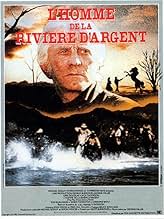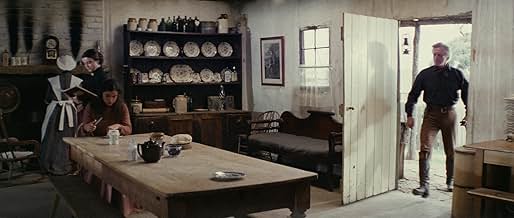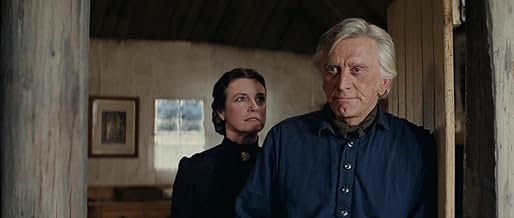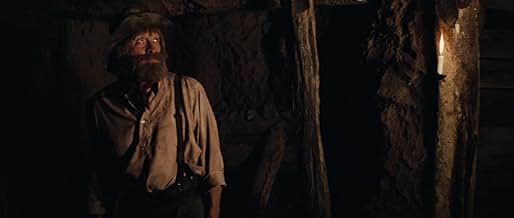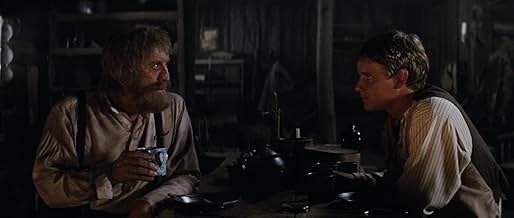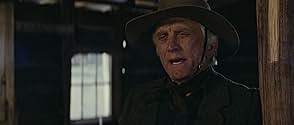CALIFICACIÓN DE IMDb
7.2/10
11 k
TU CALIFICACIÓN
En la década de 1880, en Australia, después de la muerte del padre del joven Jim Craig, acepta un trabajo en el rancho de ganado Harrison, donde se ve obligado a convertirse en un hombre.En la década de 1880, en Australia, después de la muerte del padre del joven Jim Craig, acepta un trabajo en el rancho de ganado Harrison, donde se ve obligado a convertirse en un hombre.En la década de 1880, en Australia, después de la muerte del padre del joven Jim Craig, acepta un trabajo en el rancho de ganado Harrison, donde se ve obligado a convertirse en un hombre.
- Dirección
- Guionistas
- Elenco
- Premios
- 2 premios ganados y 3 nominaciones en total
- Dirección
- Guionistas
- Todo el elenco y el equipo
- Producción, taquilla y más en IMDbPro
Opiniones destacadas
10mihee
It is hard to believe that so many years has past since I first saw "A Man from Snowy River." I was young and borrowed it on Betamax (yes Betamax) from a friend. Although I wish that I could of seen a full screen version of it, I will have to settle with the still fantastic small screen version.
The story is fairly simple. After his father dies, a boy tries to prove he a man worthy enough to live on his beloved Snowy Mountain. In order achieve this prize, he finds work on lower ground on a big ranch. A sweet romance is set between Jim, the boy, and the Rancher's daughter, Jessica, who is a feisty and strong female. There are wild horses, a sympathetic-but-bad-guy rancher, and beautiful scenery all which are an integral part of the story. (I don't want to give too much of the movie away).
I recently saw this movie (this time on VHS)with my niece and nephew. I could not believe how much I enjoyed it again. The thrilling horse riding scenes kept me at the edge of my seat. It is an ultimate family film one that has no foul language, gratuitous sex or violence. Nothing is dumbed down, the viewers being treated with the respect we deserve. GO RENT IT NOW!
The story is fairly simple. After his father dies, a boy tries to prove he a man worthy enough to live on his beloved Snowy Mountain. In order achieve this prize, he finds work on lower ground on a big ranch. A sweet romance is set between Jim, the boy, and the Rancher's daughter, Jessica, who is a feisty and strong female. There are wild horses, a sympathetic-but-bad-guy rancher, and beautiful scenery all which are an integral part of the story. (I don't want to give too much of the movie away).
I recently saw this movie (this time on VHS)with my niece and nephew. I could not believe how much I enjoyed it again. The thrilling horse riding scenes kept me at the edge of my seat. It is an ultimate family film one that has no foul language, gratuitous sex or violence. Nothing is dumbed down, the viewers being treated with the respect we deserve. GO RENT IT NOW!
Disregard the goofs, inconsistencies and any other flaws that are mentioned in the reviews. This movie is beautifully photographed; in many cases, I don't know how. Great horse riding....again, I don't know how and the music raises goose bumps. This movie is any frustrated "cowboy's" dream. It is unbelievable that anyone can stay on a horse in a controlled ride during the scenes. I would love to read more technical details about the filming of this movie......especially how Kirk Douglas was able to fold his leg at the knee and put it all in one pant leg. The camera set ups and shots had to be pure genius to think they actually worked. It is very easy as I said before to overlook, even if you recognize them, any flaws.
THE MAN FROM SNOWY RIVER ***** An Australian western that centers its story on a coming-of-age mountain man (Tom Burlinson) who's father dies and must go to the lowlands to earn enough money to support the family farm. There, he finds work at a cattle ranch owned by Kirk Douglas, who wants to expand his success to something greater: unmined gold in the mountains. As Burlinson comes to grips with his new work setting and first love (Sigrid Thornton), he evolves into the man he needs to be to follow in his father's footsteps back home. It's excellent family entertainment, with a story that is basic enough for everyone to comprehend, yet doesn't hold a corny or simpleton status because of it. Be sure to rent it.
Shawshank is superb. Roman Holiday is perfect. Raiders is a blast. But The Man from Snowy River has been, is, and always will be my favorite movie. Some movies just match your personality more than others, trumping any technical deficiencies they may have. No, Snowy River doesn't have the best acting, the best screenplay, the best direction. But in all of them it's great, and the combination of the story, the cast, the scenery, and music (Bruce Rowland deserved an Oscar for his score) is much greater than the sum of its parts. For me, it's everything a movie ought to be: uplifting, heartwarming, optimistic, romantic, adventurous. It swept me away when I was 13 and its magic hasn't dimmed at 34. What a wonderful movie.
This movie is both perfect and imperfect. Perfect because it has amazing horse riding scenes, beautiful cinematography and music, wonderful acting from Jack Thompson who captures the quintessential Clancy of the Overflow of Australian legend, and a great performance from Tom Burlinson, and showcases the skills of the 'real deal' cattlemen of the high country who acted as extras in the horse chase scenes, and finally because it can bring a tear to the eye the way Banjo Paterson's poem has for 120 years. This film was clearly a work of love and that is wonderfully conveyed.
However it's also imperfect because Kirk Douglas simply doesn't work in this context, and his two roles seem at times ridiculous. The storyline also meanders around at times, mostly in relation to one of Douglas's two characters, and it just seems a pity that an otherwise wonderful film has these flaws.
This is a movie to stir the heart, and well worth watching, and the horse chase scenes in the movie are now as much a part of Australia's culture as the original poem.
However it's also imperfect because Kirk Douglas simply doesn't work in this context, and his two roles seem at times ridiculous. The storyline also meanders around at times, mostly in relation to one of Douglas's two characters, and it just seems a pity that an otherwise wonderful film has these flaws.
This is a movie to stir the heart, and well worth watching, and the horse chase scenes in the movie are now as much a part of Australia's culture as the original poem.
¿Sabías que…?
- TriviaTom Burlinson had never ridden horses much before making this movie and when he took Denny over the cliff to go after the brumbies that was a one-take shot at full gallop down the cliff face.
- ErroresAt the end of the film when the brumbies are being driven toward a holding corral, the mare Bess and the colt are way out in front. They're domesticated, and they'd know that the ranch meant food and water, so they'd be more eager to return than the others.
- Créditos curiososA herd of wild horses stampede over the hills after the end credits.
- Versiones alternativasNBC edited 8 minutes from this film for its 1987 network television premiere.
- ConexionesEdited into Terror Nullius (2018)
Selecciones populares
Inicia sesión para calificar y agrega a la lista de videos para obtener recomendaciones personalizadas
- How long is The Man from Snowy River?Con tecnología de Alexa
- Who is the man from Snowy River?
- Is 'The Man from Snowy River' based on a book?
- What is a brumby?
Detalles
- Fecha de lanzamiento
- País de origen
- Idioma
- También se conoce como
- The Man from Snowy River
- Locaciones de filmación
- Productoras
- Ver más créditos de la compañía en IMDbPro
Taquilla
- Presupuesto
- USD 3,500,000 (estimado)
- Total en EE. UU. y Canadá
- USD 20,659,423
- Fin de semana de estreno en EE. UU. y Canadá
- USD 694,126
- 7 nov 1982
- Total a nivel mundial
- USD 20,708,426
- Tiempo de ejecución1 hora 42 minutos
- Mezcla de sonido
- Relación de aspecto
- 2.35 : 1
Contribuir a esta página
Sugiere una edición o agrega el contenido que falta

Principales brechas de datos
By what name was Herencia de un valiente (1982) officially released in India in English?
Responda

